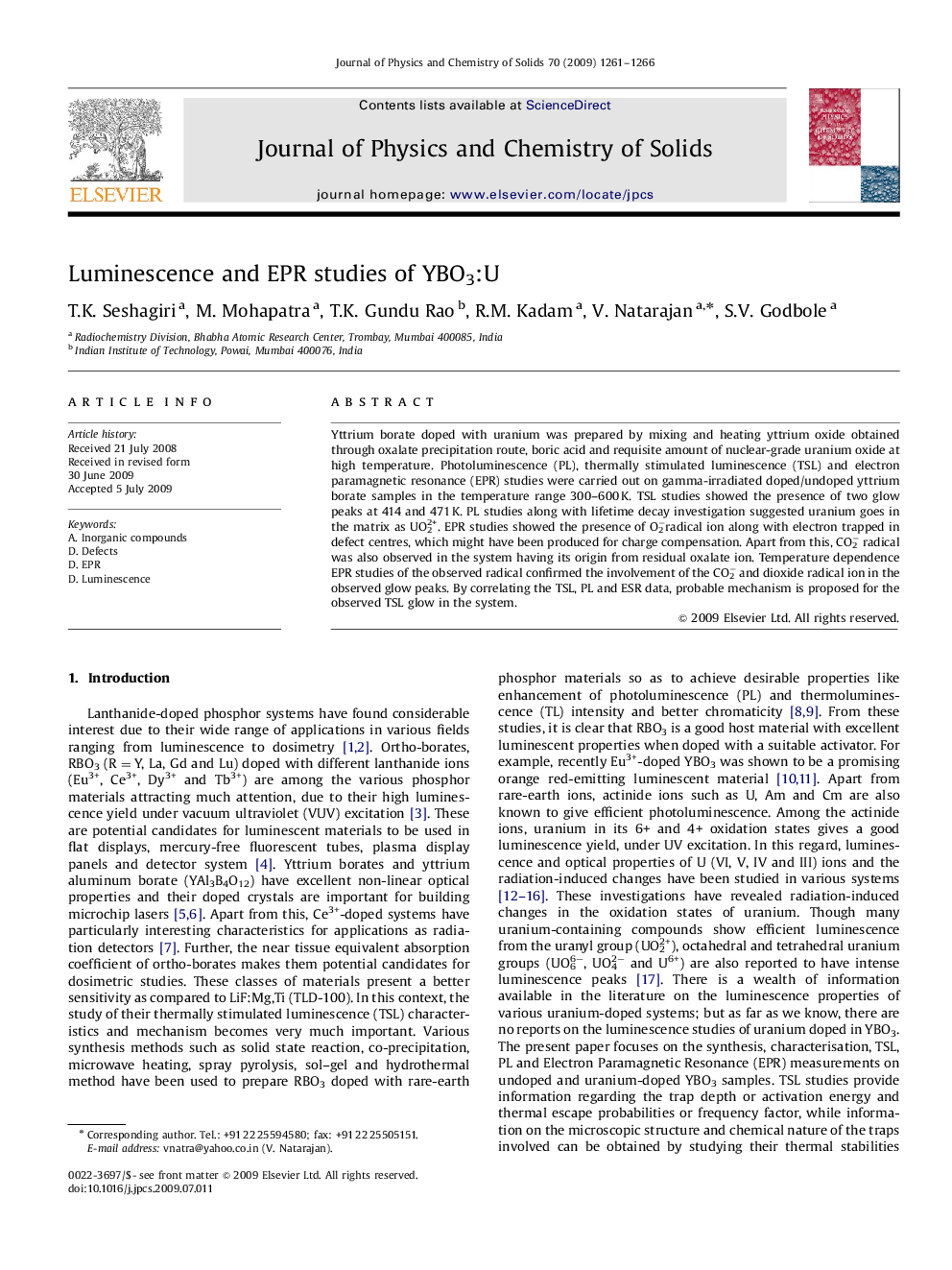| Article ID | Journal | Published Year | Pages | File Type |
|---|---|---|---|---|
| 1517382 | Journal of Physics and Chemistry of Solids | 2009 | 6 Pages |
Yttrium borate doped with uranium was prepared by mixing and heating yttrium oxide obtained through oxalate precipitation route, boric acid and requisite amount of nuclear-grade uranium oxide at high temperature. Photoluminescence (PL), thermally stimulated luminescence (TSL) and electron paramagnetic resonance (EPR) studies were carried out on gamma-irradiated doped/undoped yttrium borate samples in the temperature range 300–600 K. TSL studies showed the presence of two glow peaks at 414 and 471 K. PL studies along with lifetime decay investigation suggested uranium goes in the matrix as UO22+. EPR studies showed the presence of O2−radical ion along with electron trapped in defect centres, which might have been produced for charge compensation. Apart from this, CO2− radical was also observed in the system having its origin from residual oxalate ion. Temperature dependence EPR studies of the observed radical confirmed the involvement of the CO2− and dioxide radical ion in the observed glow peaks. By correlating the TSL, PL and ESR data, probable mechanism is proposed for the observed TSL glow in the system.
